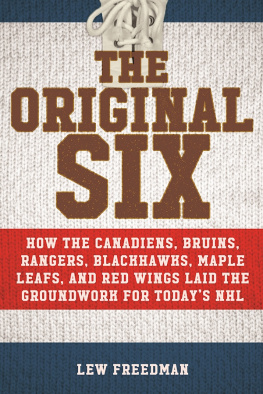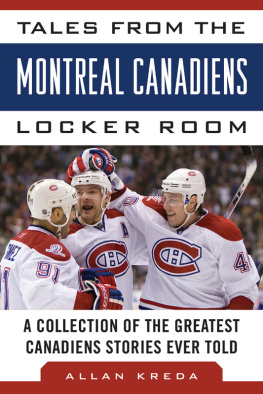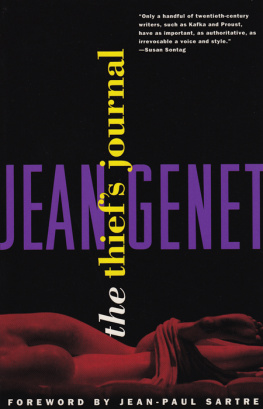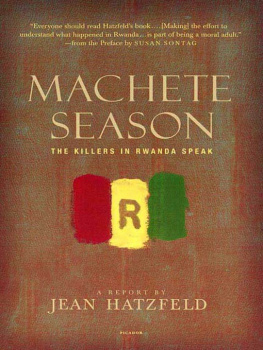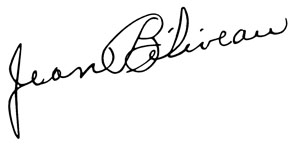MY LIFE IN HOCKEY
Vancouver/Berkeley
FOREWORD
by WAYNE GRETZKY
THE C THAT JEAN BLIVEAU wore so proudly on his Montreal Canadiens jersey could as well have stood for class as it did for captain of the perennial Stanley Cup champions.
I clearly remember watching Hockey Night in Canada on Saturday nights as a child, sitting with my dad at my grandmas farmhouse. We all marveled at the command displayed on the ice by big Jean Bliveau. It was obvious that he was the leader of those great teams. He carried himself like a leader, he competed like a leader, and he won with dignity like a leader. My father often remarked that whenever Jean Bliveau spoke, his comments were intelligent and humble. When Jeans team won, he was gracious in describing the Canadiens opponents. Even at the age of six or seven, I could see there was something special about the Habs big number 4on and off the ice.
Many years later, I had lunch in Atlantic City with Jean and his beautiful wife, lise. I had been playing in the National Hockey League for only two years at the time, and Jean was firmly fixed in the executive offices of the Canadiens and Molson Companies Limited after eighteen glorious NHL seasons. Many legends of sport attended that event, and I watched as several of the biggest names in the history of the NFL, NBA, and professional baseball came to our table to greet the distinguished Jean Bliveau and his wife.
Having had the good fortune to win four Stanley Cups in my career and to experience the satisfaction and lifelong friendships that are generated by such a difficult and collective effort, it is mind-boggling to recall that Jean Bliveau accomplished the feat no fewer than ten times as a player and seven times more as a senior executive with the same organization. I dont think there can be any other figure in the history of professional team sports who better exemplifies the word winner.
Jeans induction to the Hockey Hall of Fame was automatic. Im sure the decision came as naturally to the selection committee as scoring the big goal, winning the big game, and conducting himself with grace and distinction did to Jean Bliveau.
INTRODUCTION
by ALLAN TUROWETZ
IN THE SPRING OF 2004 , I was the guest of Jean Bliveau at a Canadiens game at Montreals dazzling Bell Centre. Inside the vast arena, the decibel level was so sharp and so annoying that I almost expected to see fans clutch their bleeding ears in agony.
A petite woman stood at the Canadiens blue line, brandishing a microphone and exhorting the crowd in a high-pitched screech. It was yet another intermission promotion, to this fan nothing more than an irritating delay of the work of the ice-resurfacing crew after the previous period.
On the ice beside her teetered three giddy contest winners, all wearing Montreal Canadiens team jerseys and preparing to shoot pucks into an undersized opening in a net at one end of the rink. Big money was at stake, but it rarely left the building after these spectacles. If the Montreal Canadiens can miss their share of open nets, the average fan in street shoes is no match for the problematic logistics of composite stick, a vulcanized rubber disk, a significant distance over a tricky ice surface, and the vagaries of friction.
I silently bet on a shutout while voicing to my host my disapproval of this circus act. A second seatmate commented on the marketing idiocy that masquerades as entertainment these days. While the goal-scoring competition went on, the Jumbotron sound system kicked in periodically with the earsplitting heavy-metal chords that some call music.
I felt suddenly guilty for my part in the original negotiations that brought that Jumbotron into this space. It seemed to pose a threat to the health of all who were its captives; perhaps I owed everyone in these seats an apology. And I knew this was only the beginning: when the game finally began, all senses would be assailed by a wall of sound so piercing that it would almost eviscerate us every time play was stopped. I wondered if todays sports entrepreneurs feared silence above all else.
Who is this aimed at? I whined, as the crowd cheered and groaned at misdirected pucks and the color commentary of the woman with the mike.
Jean Bliveau was as gracious and unperturbed as ever, an island of calm dignity in this raucous amphitheater. He is a man more accustomed to the ballads of Charles Trenet, to chansonniers like Brel, Montand, and Piaf, to music lovingly rendered in a bote chansons or piano bar, his wife at his side and a civilized drink on the table.
A faint smile on his face, he nodded to a spot three rows down. There, two preteeners bopped to the beat, so caught up in the energy of the place that they could hardly sit still. They were bedecked head-to-toe in Canadiens merchandisejerseys, pants and capswith one waving a Canadiens pennant and the other an outsize logo-bearing sponge-rubber index fingernumber 1that identifies the hard-core fan everywhere.
Its aimed at them, he said matter-of-factly. These were the fans of the new millennium, high on the Hockey Show. When the game was over, theyd go home and relive it on their PlayStations or Xboxes. He directed my attention back to the Jumbotron. The house cameras panned over the crowd, and every time the house director spotted a young fan in Canadiens paraphernalia, the camera lingered just long enough for friends and seatmates to acknowledge the moment with friendly shoves and squeals of delight. Then the camera moved on to the next target in the roiling mass of this NHL-branded mosh pit.
The Hockey Show circa 2004 bore no resemblance to the game Jean Bliveau played at the venerable Montreal Forum fifty years ago. But, as he gently reminded me, it is still the National Hockey League and we are still here to see hockey. Canadians define themselves by this sport, and although much has changed, that fact never has.
Jean Bliveau should know; hes been there for the entire journey, for half a century of hockey and all the changes those decades have seen.
And he understands it all.
PROLOGUE
IN THE ELEVEN YEARS since the publication of the first edition of this memoir of my life in and around hockey, nothing has changed more for the hockey fan than the game experience itself.
Indeed, if you had been stuck in a time warp for the past decade, you might have had a hard time even finding your old arena. Nearly every team in the National Hockey League has opened a new rink since the late 1990s; in Canada, new buildings were inaugurated in Vancouver, Montreal, Ottawa, and Toronto in the four-year period between 1995 and 1999 alone. South of the border, the NHL outfitted itself with no fewer than eighteen state-of-the-art venues, beginning with the Arrowhead Pond for the Anaheim Mighty Ducks in 1993 and ending with the Glendale Arena for the Phoenix Coyotes in 2003. All are beautifully designed, computerized facilities that can be adapted to many audiences and needs: small sites for a couple of hundred patrons in an intimate nightclub setting, medium bowls for solo performers or comedians, halved facilities for rock groups just breaking onto the scene, or full-size arenas for the headline acts.
I recall a similar buzz of out with the old, in with the new at the Montreal Forum in 1993 when I was preparing for official retirement from the Canadiens organization. In those days it seemed that team president Ronald Corey was constantly surrounded by scrums of gentlemen in tweed jackets, bulky blueprints under their arms and safety helmets on their heads. His pace quickened by the challenge, the Canadiens president was overseeing the construction of what would become the Molson Centre (later the Bell Centre), and everyone in our front office was caught up in his enthusiasm. Parties of officials were forever returning from a trek to the construction site in the city center or heading there for a day of consultations and supervision. As they say, no boy of any age can pass a construction site without stopping and marveling at the trucks and cranes.



